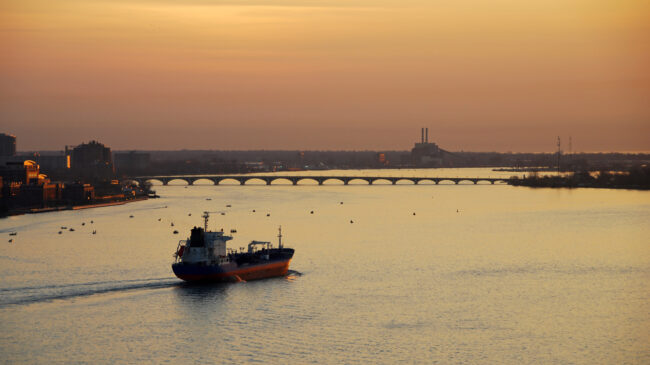The inland waterway system serves as a cost-effective, environmentally friendly method of transporting freight throughout the country. An insufficiently funded and maintained inland waterway system has led to a system plagued with breakdowns and unscheduled closures. Delays and scheduled closures for maintenance also plague lock and dam systems scattered throughout the inland waterway system, raising costs for producers, shippers, and consumers who rely on waterborne freight transportation.
This instability has contributed to an ongoing trend of decreasing waterborne commercial activity, especially on inland routes. The COVID-19 pandemic exacerbated the problem further, leading to a greater decrease in waterborne activity along the inland waterway system due to a sudden trough of demand. When instability (especially delays) plagues the system, shipping over the waterways becomes less cost-efficient, driving shippers to other modes as shown by lowered demand.
Given the importance of the inland waterway system to supply chains across the country, it must be revitalized in a more cost-effective manner that doesn’t unduly burden general taxpayers. Currently, barge vessels pay a small lockage fee that covers a dwindling percentage of capital costs. However, taxpayers pay for 100% of the inland waterway system’s operations and maintenance costs, as well as an increasing share of new construction capital costs. Creating a sustainable revenue source will benefit the inland waterway system’s users and consumers as a whole. This move begins the process of shifting more of the burden to inland waterway users.
Further, long-term infrastructure should be financed and not funded, because it stretches limited resources further. One potential financing option is public-private partnerships (P3s). In addition to stretching the funds, P3s transfer risks—specifically construction cost overruns, late completion, and operations as well as maintenance of the locks.
By modernizing the inland waterway system through a new funding and financing mechanism, Congress could improve the efficiency and reliability of U.S. waterways.
This study examines the various challenges affecting the inland waterway system, including:
- Operations expenditures,
- Maintenance expenditures,
- Shipping delays,
- Current inland waterway system funding methods,
- Innovative funding for new construction, operations, and maintenance, including lock usage fees, and,
- New financing mechanisms, specifically public-private partnerships (P3s).
Full Study—Inland Waterway System Funding: Problems and Solutions

